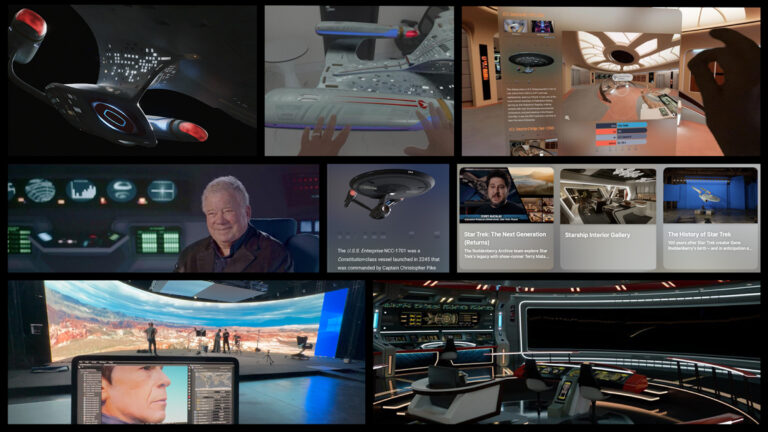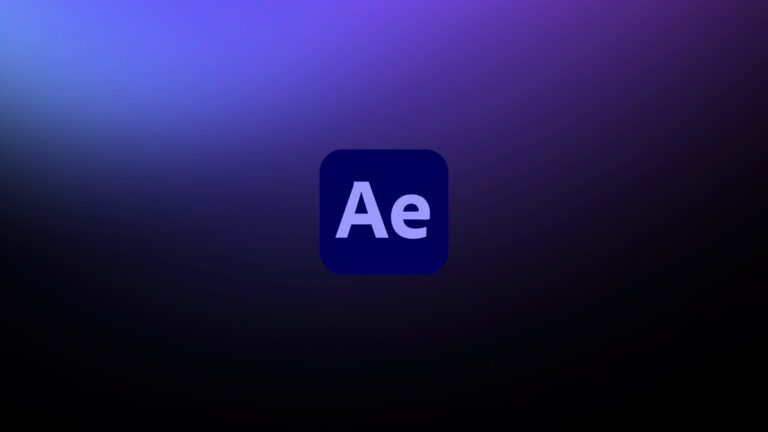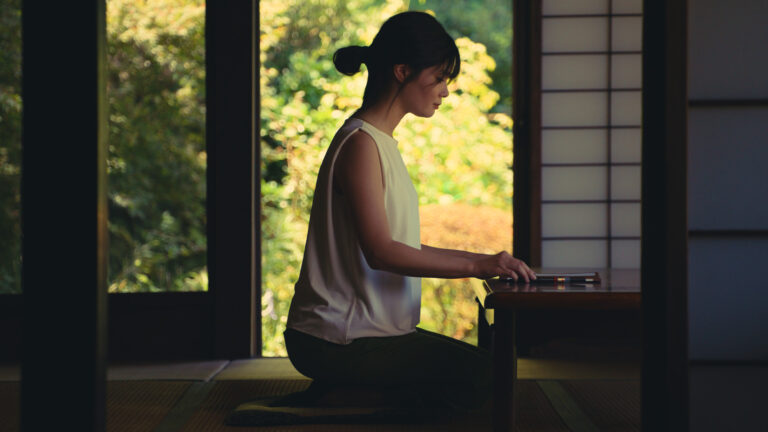From Georges Méliès breaking ground in the early 1900s to the incredible sophistication of today’s CGI, VFX artists have never stopped pushing at the boundaries of cinematic storytelling.
The introduction of digital VFX merged the scattered disciplines and toolsets of these craftspeople and sat them down at a singular workbench—the computer. Suddenly modeling, lighting, animation, compositing, and everything else was all part of the same integrated system, with greater precision than ever.
Of course, these new technologies still required skilled artists and technicians to craft the final visuals, but they eliminated many labor-intensive tasks and removed long-assumed limitations from the creative process.
This is what every new VFX technology should aim to achieve—remove pain points and expand our imagination.
The rapid swing to digital forced us all to learn new skills, adopt new standards, and adapt our thinking to capture what’s possible. Which might sound familiar.
Now that a global pandemic is forcing us out of our studios, post houses, and VFX facilities, we can all see that another huge change is taking place right now. And it’s bringing exciting new options for how we work.
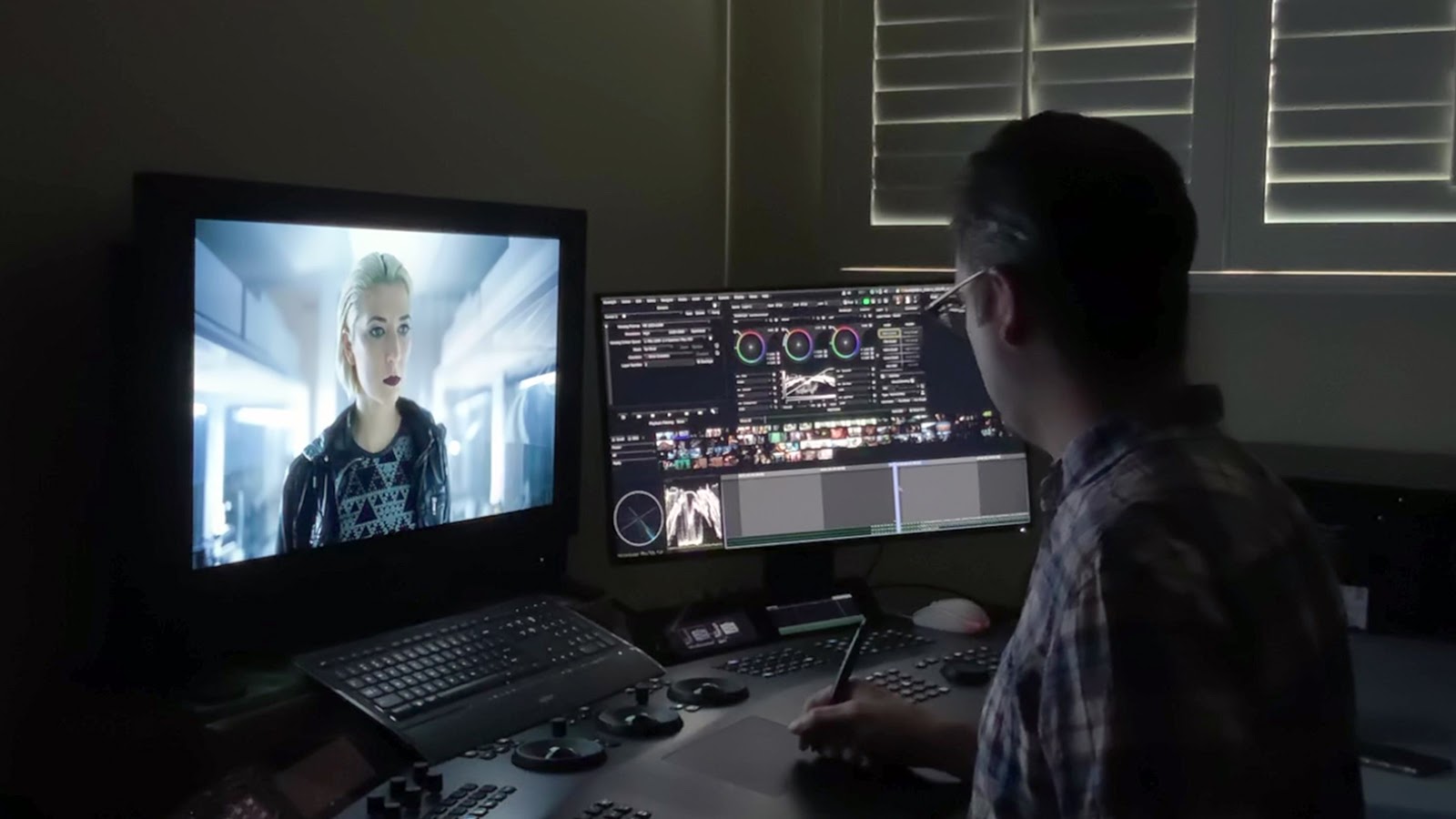
Remote work, once seen as a compromise, is now empowering VFX companies and artists to be more productive. It’s invalidating outdated assumptions and exposing entrenched inefficiencies, and new working arrangements can begin to address the work/life balance issues of the creative industry.
When you ask “what will VFX look like in 10 years from now,” you have to consider how remote workflows will be part of that vision.
There’s no doubt that CGI will look more life-like and the technology will be more powerful, but the teams that use these technologies will change, too. It’s a future we can all help to build.
In this three-part series, we’ll explore what remote workflow technology can do for the VFX industry, how it can improve the lives of artists, and why companies will need it to stay profitable and productive.
Clouds, code, and creativity
Before we take a look at what’s already changing, I’d like to start with a look at the past. Specifically mine.
I got my start in VFX way back in 1976 on the film Close Encounters of the Third Kind, where my most notable tasks were developing the cloud tank effect and camera assistant on the filming of the Mothership.

The theme continued with projects like Star Trek: The Motion Picture, Galactica (1980), and Buck Rogers in the 25th Century, before I started Dream Quest with my colleagues, which was later acquired by Disney. And five years later, I joined Industrial Light & Magic (ILM) where I spent 20 years as a CTO, VFX Supervisor, and Director.
During that time I helped develop new technologies and helped shift ILM into the digital age, and worked on The Mask, Dragonheart, and Star Wars: The Phantom Menace. I even picked up an award or two along the way.
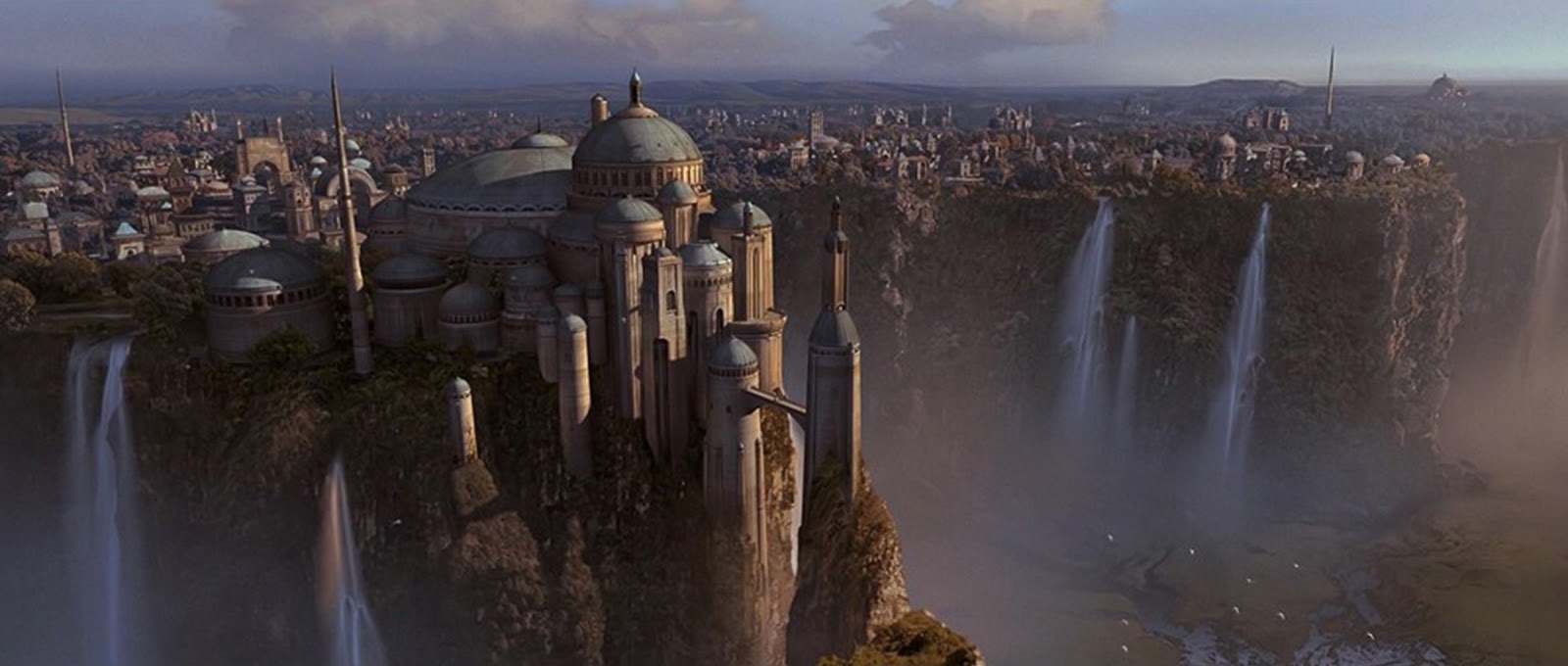
Since then, I developed a special rotoscoping and paint tool called Commotion, worked on various independent films, and in the last few years co-founded Pixvana, which created a cloud system for interactive 360° video.
I guess the point I’m trying to make here is this. I’ve been privileged to see generations of change in the VFX space, and I very much appreciate the challenges of this industry from creative, technical, and business standpoints.
The way I see it, the shift to remote workflow is a huge opportunity for the VFX industry. It allows us to re-examine the best ways to work, and enables more flexibility for everyone. Cloud computing and technology such as machine learning amplify the possibilities and are likely to play a big part in the industry’s future.
How the VFX industry works right now
Let’s start by taking a look at the typical process for bringing a VFX team onto a project.
First, a VFX supervisor and producer are hired at the start of pre-production. They split up the VFX work and assign the various pieces to multiple VFX companies based on specialties and price. Major motion pictures can have a dozen or more VFX houses all working simultaneously on different parts of the project, and each VFX company will have their own VFX Supervisor and Producer overseeing that company’s work.
During production, the VFX supervisor(s) ensure that shots are filmed correctly for handoff to the effects teams, which usually happens after the editor and director create a finished edit during post.
These locked (fully-edited) sequences are then passed to the VFX companies, where each shot is passed through modeling, rotoscoping, animating, compositing, and other specialist teams who work to make every frame match the project’s creative vision.
Throughout all of this, the VFX supervisor has to stay in close contact with the director to ensure creative consistency and avoid repeated work. The process repeats for each shot until the director has given final approval on all the shots and the film is sent off for finishing and distribution.
These cycles take time, especially when complex VFX processes can last as long as a year and involve thousands of shots and hundreds of VFX artists.

Right now, most of this work is done by companies with a centralized on-premises model—that is, offices full of desks and workstations staffed with artists. These artists work in tight teams and participate in regular group tasks like VFX dailies viewing and brainstorming.
Technically speaking, much of this process can already be completed by artists working remotely. However, if we want to build a better future for the VFX industry, we need to think hard about several key aspects of our workflow.
Is it secret? Is it safe?
If you asked a studio a year or two ago why they didn’t like to use remote workers, chances are the answer would be “security”.
Keeping high-value projects confidential (read: “leak-free”) is one of the most critical tasks of the studio, so it’s no surprise that decentralized teams make studios nervous.
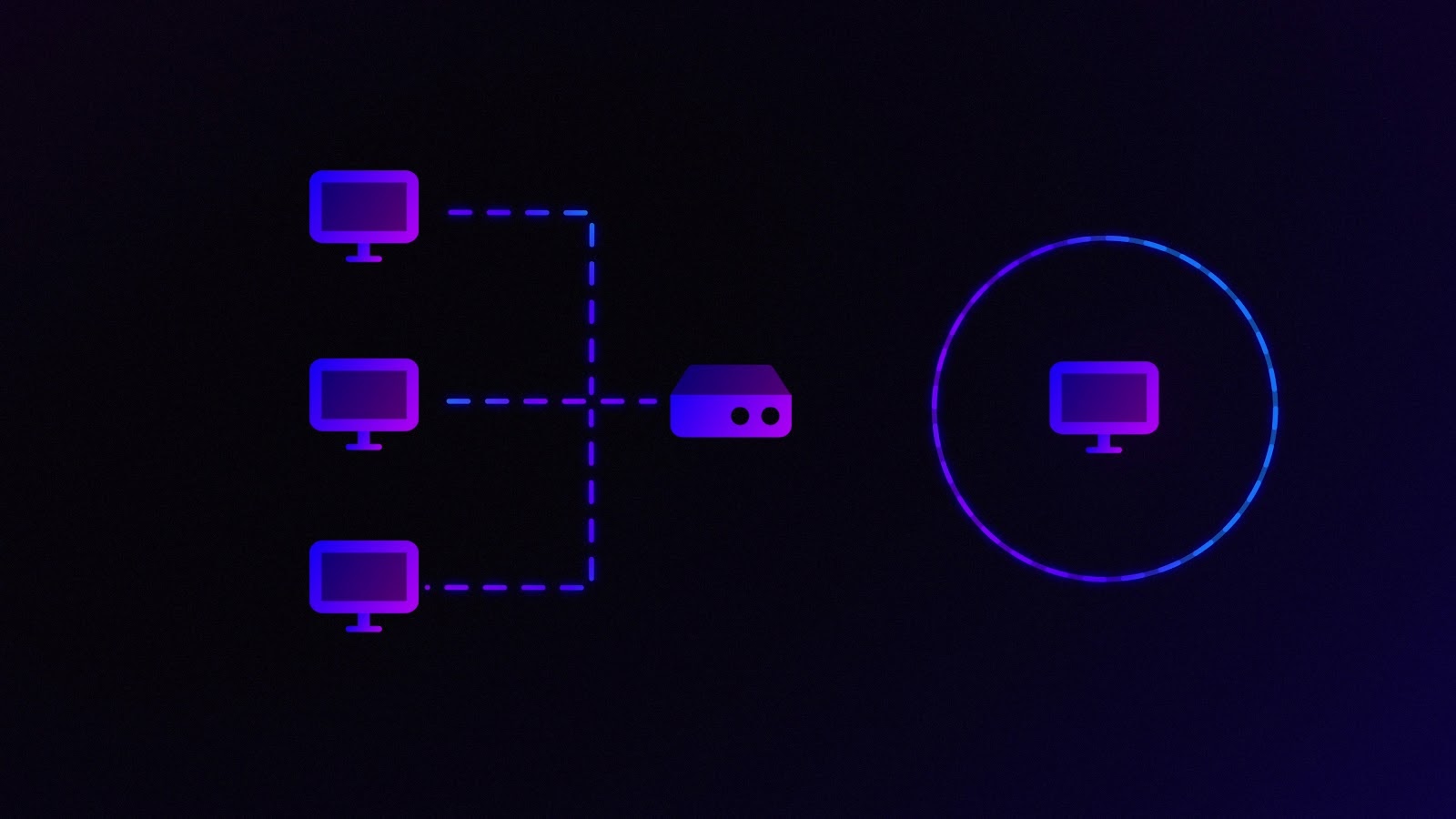
And some of this concern is warranted. Distributed teams don’t have the same rigorous protocols or dedicated security staff as a central office. Film studios should take security seriously.
But the COVID-19 pandemic has changed this equation, at least partially. Even the largest VFX companies have switched over to some form of remote setup where artists are not centrally located. For the time being, at least.
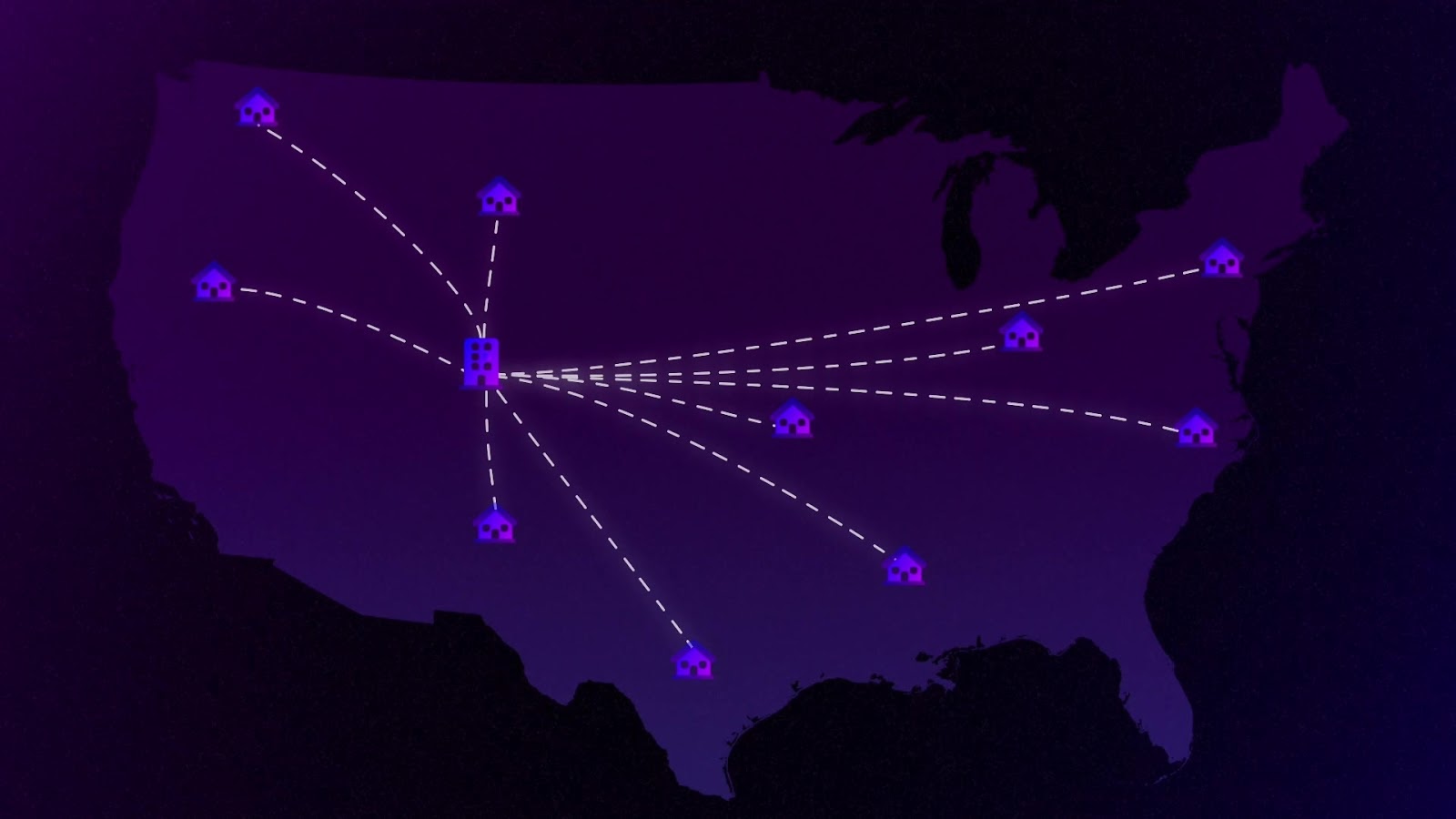
So what motivated them to make the switch? Well, money, for one thing.
Rather than delay the release of their movies, studios opted to allow the VFX companies to work remotely in order to protect the investment in movies that were already “in the can”. And with the VFX companies unable to be paid until they completed their contracts, it was mutually beneficial for the studios to allow remote work—and for the VFX companies to take whatever additional steps were possible to ensure security.
I’ll unpack this a bit more in part two.
Is this thing on?
The sheer complexity of thousands of shots, each with dozens of interconnected elements, being worked on by hundreds of artists is difficult even within a facility. So communication is vital, and any creative change has to be conveyed (effectively!) to artists so that they can make the desired alteration.
Add in feedback from producers, coordinators, editors, and all the support staff, and you’ll start to realize how complex the web of communication is for a VFX workflow.
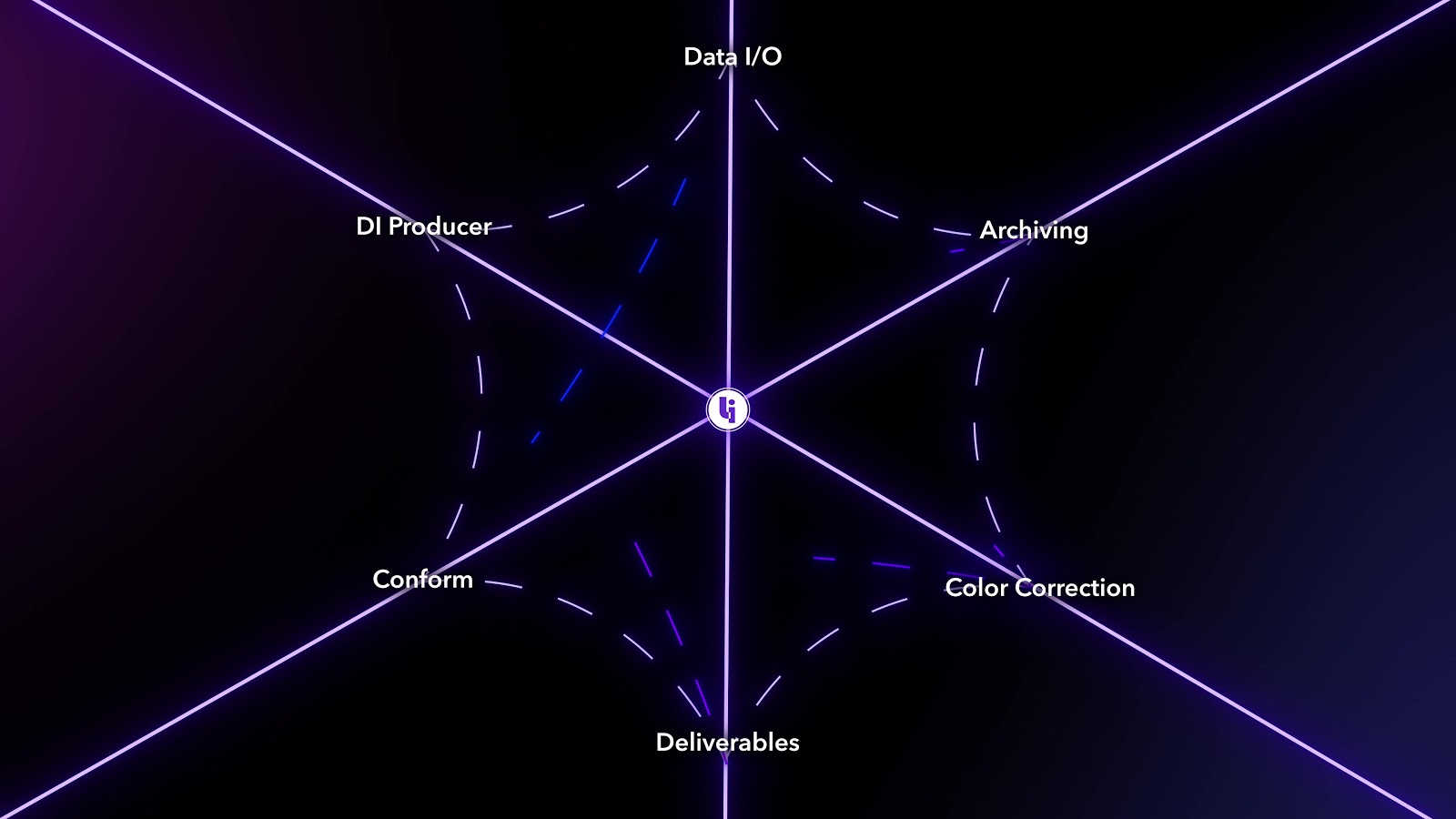
For on-premises workflow at a facility, this typically takes place over email, instant messages, and typed notes in project management tools. The system works well for archiving information and allows stakeholders to easily revisit notes as a project progresses.
But, historically, creative communication tends to be done in-person while reviewing the work visually.
This natural, in-person interaction has the advantage of effectively conveying a lot of information, especially for offhand notes. From “monitor review,” where a supervisor looks over the shoulder of an artist, to a screening room full of artists, supervisors, and the director.
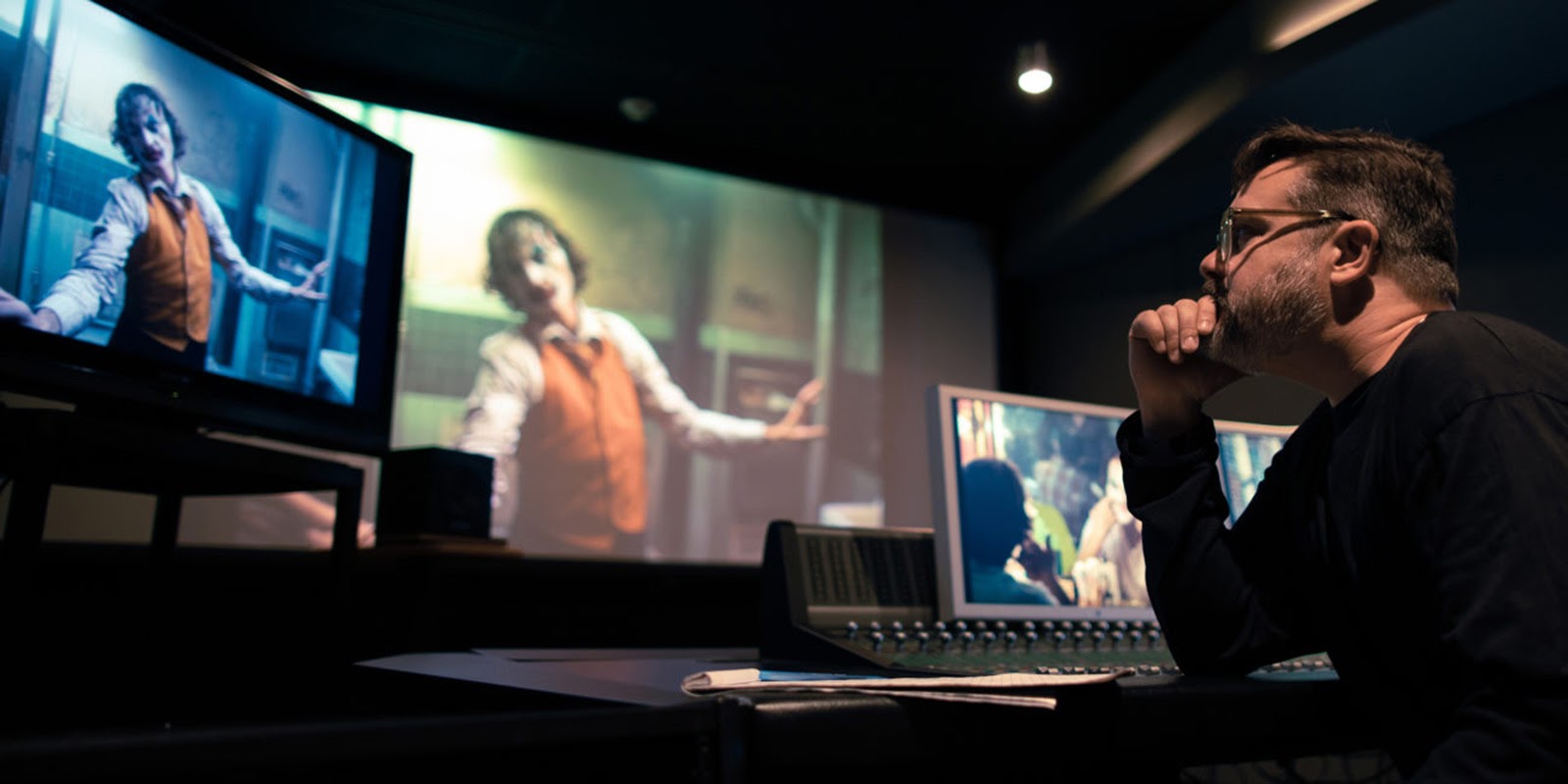
This is effective, in part, because it facilitates subtler forms of communication, like voice tone, facial expressions, and body language. So in examining remote workflows, we need to consider how communication will change, and give special attention to recreating the natural benefits of being in the same space as another human.
It’s a significant challenge. And it’ll take serious thought and refinement to build an equally human experience for remote communication.
That said, I spoke to several VFX companies while writing this series, and I was encouraged to learn that some of these issues are already being solved. Additionally, several teams said that remote communication had advantages that in-person communication lacked.
For example, some suggested that removing the effects of appearance and interaction from the task being discussed was driving more equitable peer relationships and merit-based evaluations.
However we adapt our communication to fit remote workflows, it must be organized, timely, and robust. So I’ve drawn up a list of questions that need to be answered by our remote VFX workflows.
- How will you effectively communicate with remote team members across different working environments (quiet home offices, noisy living rooms, co-working spaces, etc)?
- Is the communication method/app/service you choose sufficiently available for different operating systems and devices?
- How steep is the learning curve for new users?
- What is the cost for your team, and what is the ROI?
- How easily will your communication scale across productions and team sizes?
- How will users search and organize communication over time?
- How will you facilitate different scales of communication (one to one, one to many, and many to many)?
- How will you handle non-written/non-verbal communication, interaction, and visualization?
- How will you facilitate non-work communication for teammates?
Ultimately, successful remote workflows will hinge on the communication experience. It’s crucial that we build systems that seamlessly connect the creative talent, technical knowledge, and human engagement of our current workflows.
And from what I have seen, we’re well on our way to doing that.
Who’s in charge here?
Once we have clear lines of communication, the next challenge for remote VFX workflows is ensuring productive leadership. At a brick-and-mortar facility, team leads and supervisors make rounds, pausing at each artist’s desk to listen and see how their work is progressing.

At a facility, it’s easy enough for an artist to swing by their lead’s or supervisor’s desk, which provides important information exchange between team members. To achieve similar results, this same sort of “open door” policy needs to be in place for remote workflows.
By default, remote working means “out of sight, out of mind,” so leaders will have to make extra effort to stay in touch with their teams throughout the day. This will help artists feel engaged and provide them the opportunity to share feedback or ask questions of their own.
One concern I’ve heard from a few in management is “how will team leaders know the artists are putting in all the hours they are supposed to?”
While total team productivity is a valid concern for managers, perhaps a better question to ask is “How can we build better systems to help our teams flourish and be motivated while remote?”
By necessity, employers need to be able to trust their employees (and employees their managers). Nothing about that has changed since we started working remotely. However, our usual pattern of physically checking employees’ work is no longer available, and so we need new methods of rallying a team to the task at hand.
Rather than worrying about employees “putting in the required hours,” team leaders should be focused on “is the expected work getting done?” If it is not, then managers should work with artists to see what the hurdle is. Sometimes it will be a technical issue, or a lack of creative inspiration. But it could also be that a schedule was not clearly communicated by leadership, or that the work estimate was off from the beginning.
Effective VFX managers and supervisors will need to employ a similar system of rounds with their team while remote. The exact format of which will depend on the situation, but artists will need to feel able to complete their work without feeling micromanaged, overwatched, or interrupted.

We’re all still learning the most effective leadership practices for remote workflows, but there are already a lot of incredible VFX leaders who lead fully remote teams. The rest of the industry should take note.
Creativity from afar
A major concern that I’ve heard repeatedly over the years is “teams are less creative when they’re not in the same room.” We’ve all seen the spark when the creatives start building on each other’s ideas. It’s like improv where everyone gets excited.
The belief is that design and creativity are interactive activities that become easier the more time you spend with the same people. So, if a group of artists physically interact in person more often, they’ll be more creative together.
In some regards, this is true. When we spend more time with the same people, we learn how they think, we discover their strengths and weaknesses, empathize with them more, and can build them up better.
However, several studies on brainstorming have discovered this isn’t always the case. Sometimes, when a group of people are involved, peer pressure from sharing a physical space forces people to conform to some unhelpful behaviors and ideas (creative and otherwise).
Additionally, physical/real-time interaction may make some uncomfortable and less likely to share their ideas over fear of criticism (or fear of criticizing others). And as we all know, strong personalities can take control of these encounters, damping the engagement of others.
With asynchronous communication, we can avoid these issues and still have the option for real-time communication when it’s more beneficial. But it’s also necessary to address how we engage with our creative work while apart.
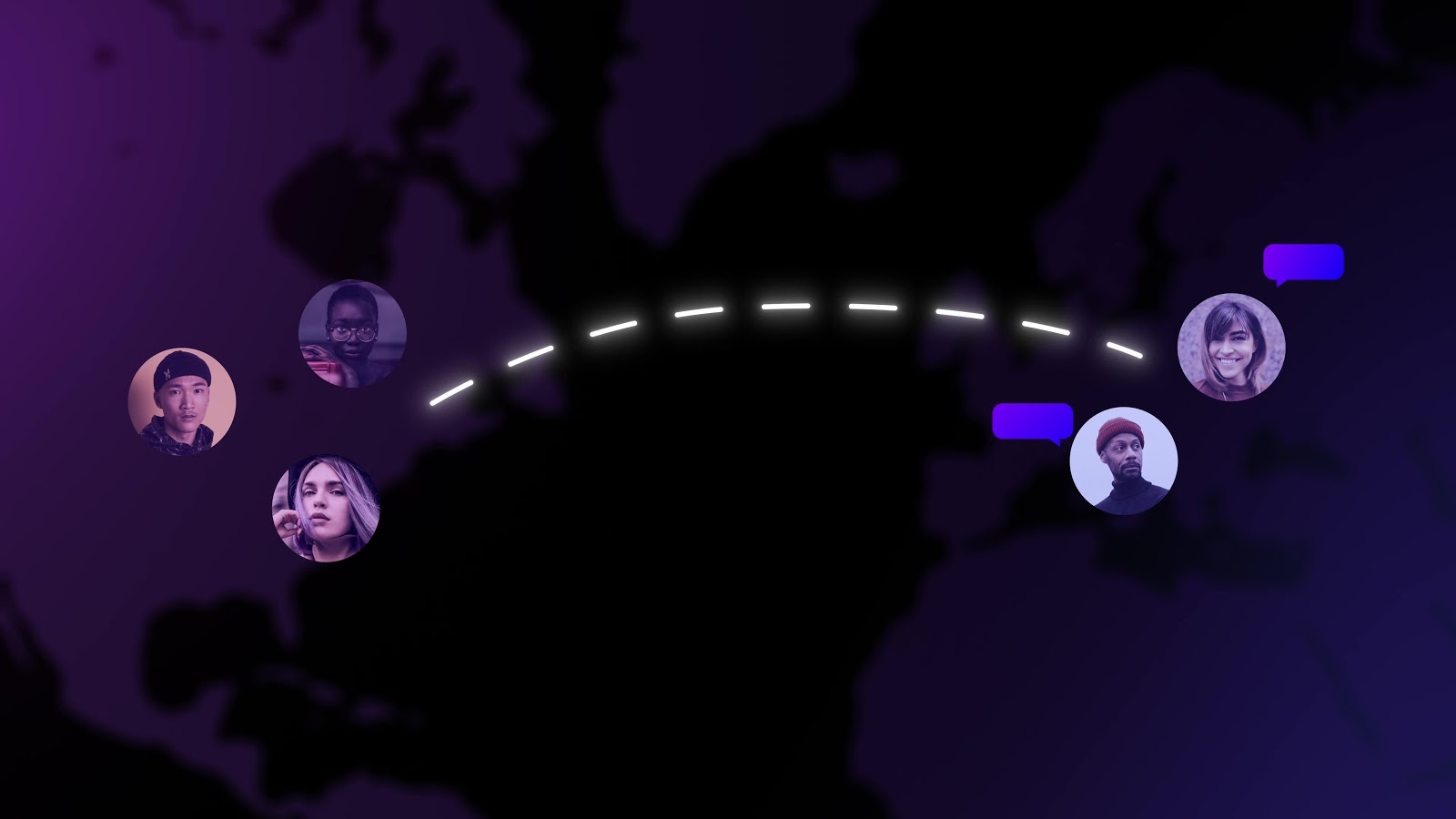
For example, in a meeting different members may need to share (or make on the spot) sketches for the project. In physical meeting rooms, this is easy, but in remote workflows might take some experimentation.
Additionally, it’s common for teams to review the same piece of work (sometimes physical models or sketches) in the same space and point at, shape, or otherwise interact with the physical object together.
These are not insurmountable issues, and from what I’ve seen, remote workflows are already addressing some of these challenges. But the premise that team creativity requires everyone to be in the same room is wrong. It’s still possible remotely, it just requires adaptation.
We have more tools than ever to connect us to people who are distant from us. We just need to learn how to use them creatively.
Mentors matter
Given the complexity of VFX work, it can take several years to become truly proficient with the tools and processes, and experience levels across a VFX team can differ wildly. Newer artists, and even experienced artists who switch tools/roles, can require significant mentorship to enable productive interaction with the rest of the team.
In my conversations with VFX teams over the past several months, a top concern I heard over and over was “how will we mentor artists while remote?”
Not everyone you hire will be an expert in everything, so you’ll have to develop their skills. That often means grouping them with veterans within your company, who can pass on expertise and insight.
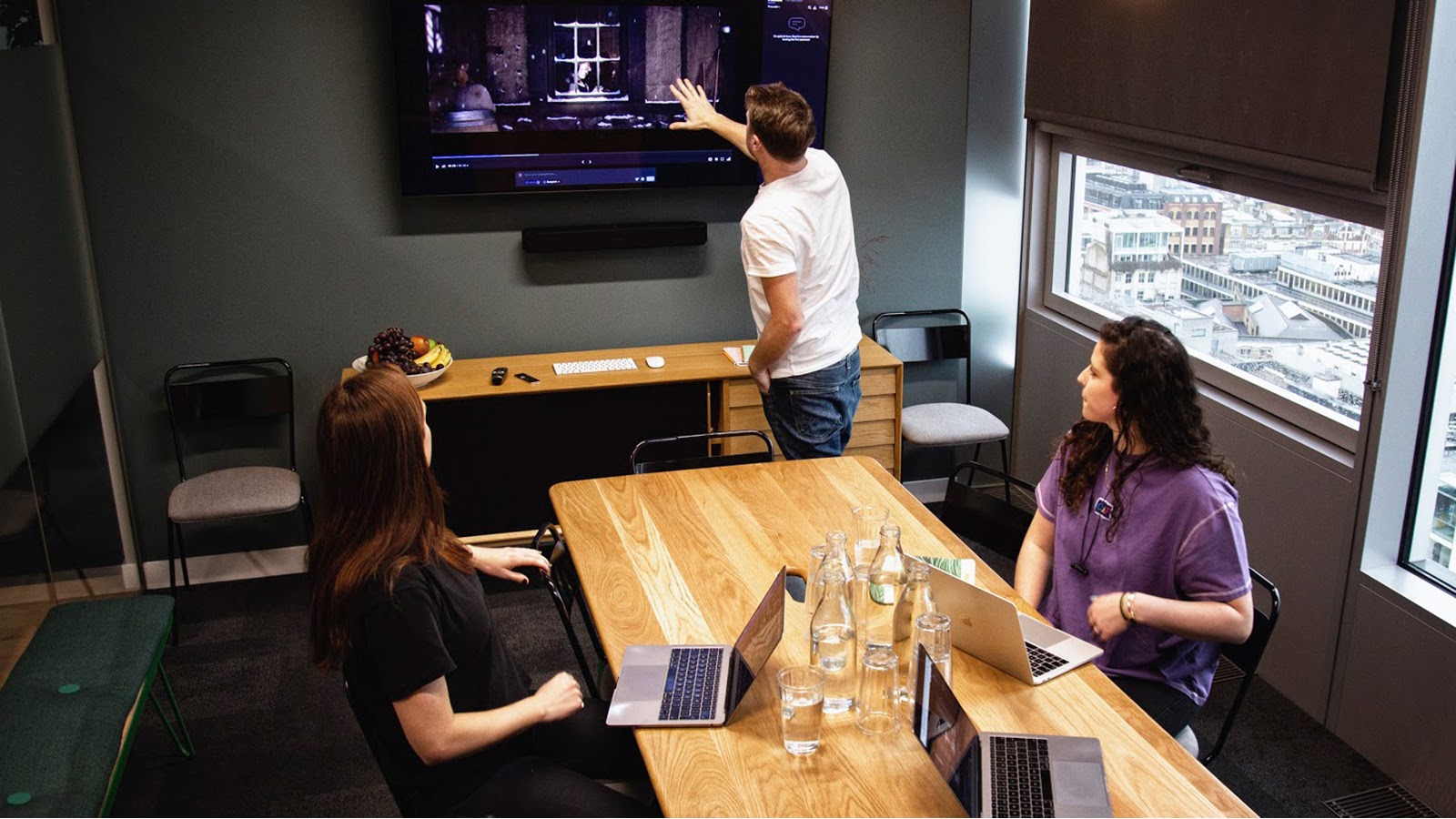
At a facility, the artist next to you is the first stop for questions about a new tool, or a team leader may stop by if there is a particular difficult issue. But for remote work, these pairings by proximity aren’t there, so we’ll need to put in a little extra effort to establish mentoring relationships.
It’s certainly a challenging task, and requires more proactivity from team members. But screen sharing is easier than ever, and many of these applications even allow another user to virtually control another machine.
Obviously, individuals will have to be open and available for impromptu help, but seeing who is online and not in a meeting is arguably easier than getting up and walking around the office to find someone.
Chin up
Staying positive can be one of the most challenging aspects of remote work. When you’re in a physical space interacting with your coworkers there can be a palpable esprit de corps.
But when you work remotely, it’s possible to work truly alone. When you look around, you won’t see coworkers or hear human voices (except maybe family members). For artists used to a lot of interaction, and at facilities where close relationships form between teams, remote work can be difficult. And yes, it can be very lonely, especially over a long period of time.
Silence and lack of communication updates can make artists wonder what they might be missing out on. Unreplied messages to teammates or supervisors can become a source of concern. “Did they like my changes or are they just busy? Or maybe they missed my email?”
All artists like to be acknowledged for doing well, but if that positive feedback doesn’t arrive, or is replaced by an impersonal “approved” notification, it lands without impact.
These issues can be amplified by settings where part of the team is centrally located, while others are remote. It’s easy for a team that’s physically together to think much less about those working remote than the people working right next to them. Impromptu meetings are called and the remote workers may not be thought of until the meeting starts—or they may not be invited at all.
As remote workflows continue to expand, management and individual artists must prioritize morale and personal engagement.
Humans need humans to flourish. And since our creative teams are very human, we must provide this interaction. Achieving this requires proactive interaction from leadership and the flexibility for non-work focused communication during hours of operation. It’s also vital to have real-time, distraction-free, face to face video chats for some meetings.
On that note, leaders should become more proactive in checking in on artists’ physical and mental well being. In an office setting, it’s fairly easy to see if someone is sick, agitated, or otherwise different from their normal, but we need to take extra care when we can’t see our team.

Parties, speakers, and other fun activities can reinforce the spirit of the wider team, and we should incorporate these kinds of events into our remote workflows as much as possible. Sure, we’ll need some new ideas (like online cooking classes or virtual museum tours), but there’s no reason why remote teams can’t have healthy, productive, and spirited morale-building experiences.
Stay on target
It’s true. Staying motivated and disciplined can be more difficult when working at home. At the office there are others working, and your supervisors are likely to walk by as you’re working. But at home, there’s no one but you to keep you on task.
Given the many comforts of home, it can be tempting to take more liberties in your workday, rather than strictly prioritizing productivity.
One area where this can be particularly disruptive is in your daily schedule. It’s very easy to roll out of bed late. But that late start means you have to stay up late to get all your work done. This makes you more tired in the morning, causing you to sleep in again, which just repeats the process. This can cause a permanent shift in your working hours, which is not particularly healthy or sustainable.
You’re also very close to diversions. Your spouse might ask you to help with something (since you’re home) or your child might want to come in and show you something. No matter what you happen to be doing.
Maintaining focus under the pressure of these (fun and valuable) distractions is a must. At the minimum, you need to find the balance that allows you to get all your work done, while still taking breaks.
Keep in mind, some remote teams already have flexible hour policies, or employees might have manager-approved schedules that accommodate childcare or other activities that have been pushed to the front of our lives during current events. Thankfully, remote workflows are empowering us to be more flexible in this area as well.
On the other side, remote work arrangements mean that it’s extremely easy to get caught up in work. Without the regular cadence of people leaving the office, it’s sometimes difficult to know “when” the work day actually ends. So set a specific cutoff time for your work day, or it’ll drag right on up to the point of going to sleep.
This trend of fuzzy “end of day” times is a real danger for remote workers. Flexible working hours are a double-edged sword, so it’s up to us to set good standards for work-life balance.
The technology is here
Once you’ve thought through the changes necessary to deal with communication and human interaction while working remotely, the next step is to evaluate the technical challenges.
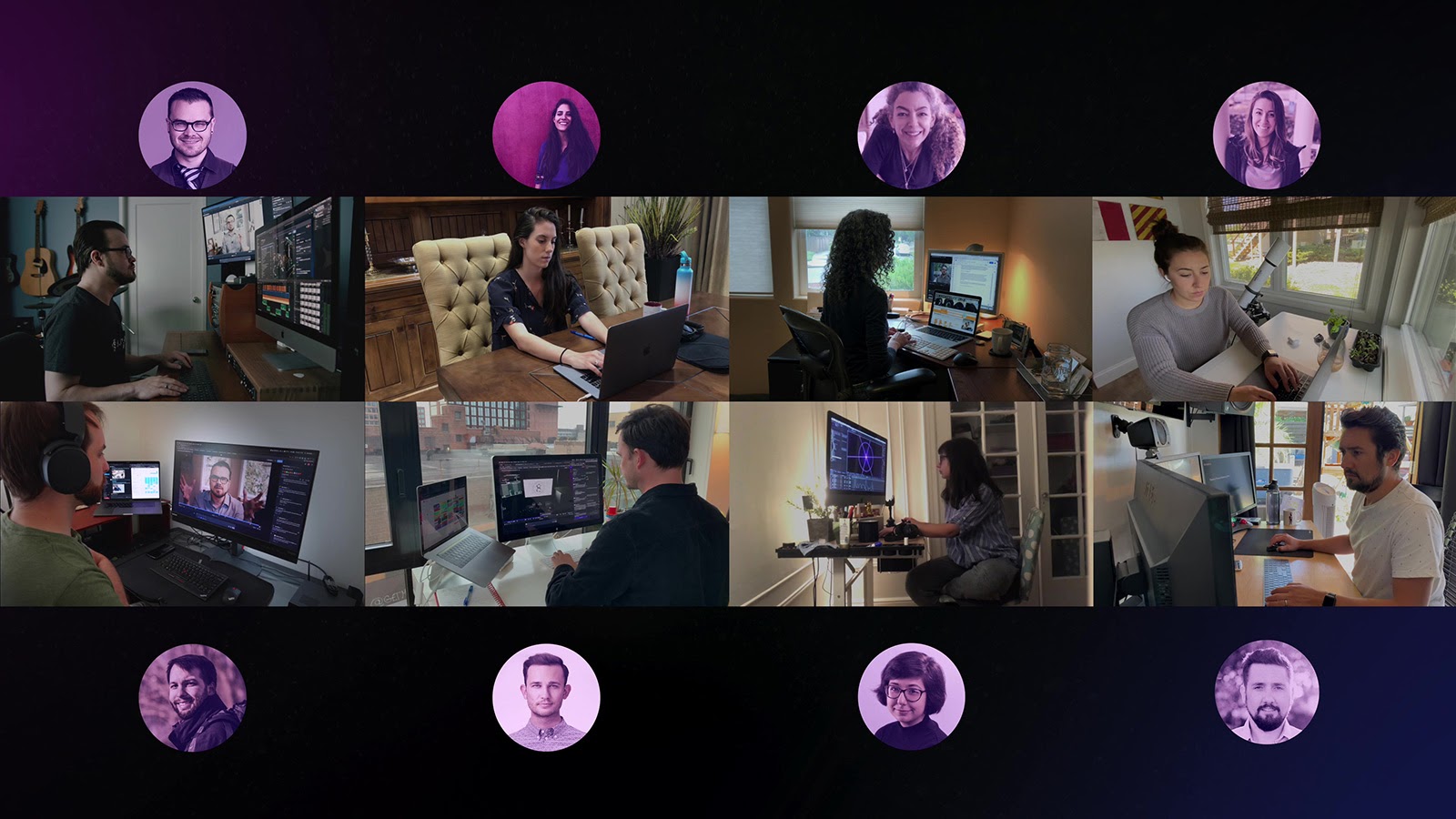
While the specific VFX applications will (for now) remain the same, the overall workflow structure must change to accommodate a distributed operation. Project setup and pipeline processes will need a number of adjustments.
The good news is that the technology has come far enough to enable a fairly easy shift to remote work. And that’s what I’ll focus on in part two.


